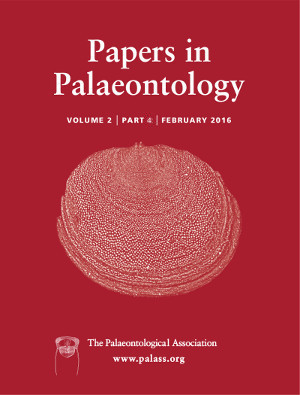Reg. Charity No. 1168330

Our understanding of fossil priapulids, and in particular the palaeoscolecids, is limited owing to the rarity of preserved anterior introverts and a general absence of detailed cuticular ornament preservation in compression material. Here we describe Wronascolex yichangensis sp. nov. (Cycloneuralia, Palaeoscolecida) on the basis of overall external morphology and distinctive scleritome organization in new compressed material from the Shipai fauna, Cambrian Series 2, Stage 4 in the Three Gorges area of South China. Recurrent fine‐scale features observed in SEM analysis distinguish W. yichangensis sp. nov. from other species by its extremely closely spaced annulations, each with two rows of Hadimopanella‐type plates ranging from 37 to 62 μm in diameter but without platelets or microplates, and each plate adorned with a single circle of four to seven nodes and an occasional central node on the upper surface. Since the recent reassignment of some species from Palaeoscolex into Wronascolex, the latter genus has become a fairly diverse and cosmopolitan genus ranging from Cambrian Stage 4 to Drumian in age. However, knowledge of the sclerite pattern of Wronascolex and its associated microstructure for taxonomic purposes are still poorly understood. Since the origins of the phosphatized Hadimopanella‐type sclerites are apparently quite diverse, evaluating the biodiversity and biostratigraphic utility of Wronascolex is currently problematic.